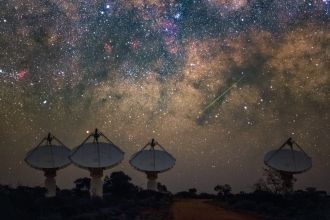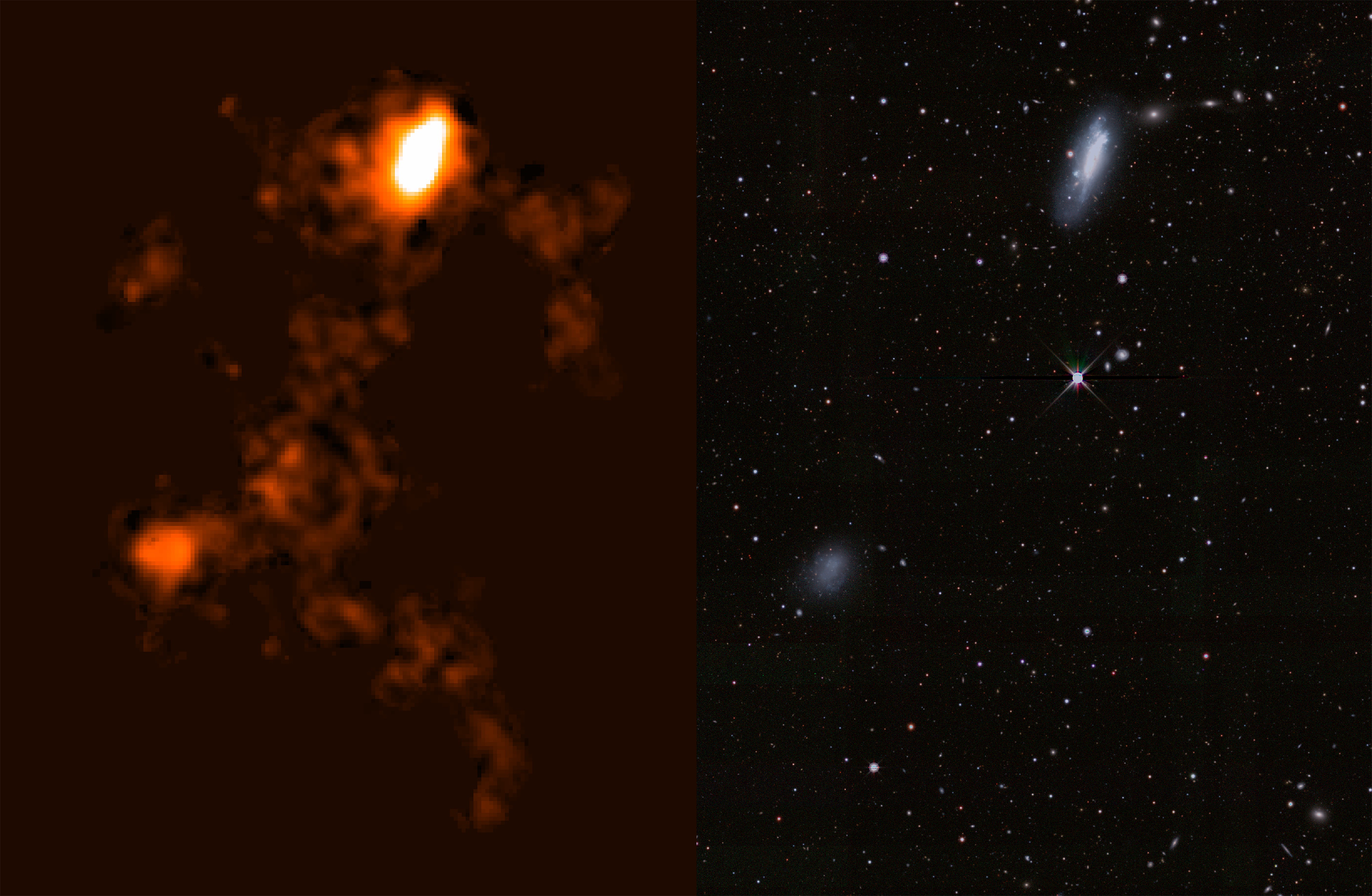Media release
From:
Dwarf galaxies linked by massive intergalactic gas bridge
Astronomers have made a groundbreaking discovery of a colossal bridge of neutral hydrogen gas linking two dwarf galaxies.
Researchers from The University of Western Australia node at the International Centre for Radio Astronomy Research (ICRAR) have uncovered an immense structure, which spans an astonishing 185,000 light-years between galaxies NGC 4532 and DDO 137, located 53 million light-years from Earth.
The study, published overnight in the Monthly Notices of the Royal Astronomical Society, also revealed that a vast tail of gas accompanied the bridge, extending 1.6 million light-years, making it the longest-ever observed.
Lead author, ICRAR UWA astronomer Professor Lister Staveley-Smith, said the discovery marked a significant step forward in understanding how galaxies interact.
“Our modelling showed that the tidal forces acting between these galaxies, alongside their proximity to the massive Virgo cluster of galaxies, played a crucial role in the gas dynamics we observed,” Professor Staveley-Smith said.
“As the galaxies rotated around each other and moved toward the hot gas cloud surrounding the Virgo cluster, which was 200 times hotter than the Sun's surface, they experienced what is known as ram pressure, which stripped and heated the gas from the galaxies.
“The process is akin to atmospheric burn-up when a satellite re-enters the Earth's upper atmosphere, but has extended over a period of a billion years.
“The density of electrons and the speed at which galaxies are falling into the hot gas cloud are enough to explain why so much gas has been pulled away from the galaxies and into the bridge and surrounding areas.”
The observations were part of the Widefield ASKAP L-band Legacy All-sky Survey (WALLABY). This large-scale project maps the sky and studies the distribution of hydrogen gas in galaxies, using the ASKAP radio telescope, owned and operated by CSIRO, Australia’s national science agency.
Co-author and ICRAR UWA astrophysicist Professor Kenji Bekki said researchers discovered the colossal gas formations by using high-resolution observations of neutral hydrogen.
“Neutral hydrogen plays a crucial role in the formation of stars, making this finding fundamental to understanding how galaxies interact and evolve, particularly in dense environments,” Professor Bekki said.
Professor Staveley-Smith said the system had strong similarities with our own Milky Way and Magellanic System, providing a unique opportunity to study such interactions in detail.
“Understanding these gas bridges and their dynamics provides critical insights into how galaxies evolve over time, how galactic gas is redistributed, and the varying conditions under which galaxies may or may not form stars,” he said.
“This contributes to our broader understanding of the most massive structures in the Universe and their life cycles, which helps us grasp more about their vast complexities and history of star formation.”
Multimedia assets available -
Multimedia





 Australia; VIC; WA
Australia; VIC; WA



